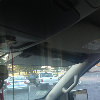SPSmith
Member
- Joined
- March 9, 2012
- Messages
- 20
- Reaction score
- 1
- City, State
- Yakima, WA
- Year, Model & Trim Level
- 1991 Explorer XLT
The engine turns over normally but will not start. Fuel pump cycles normally and there is plenty of fuel pressure at the rail. If I spray raw fuel, carb cleaner or starting fluid into the intake it tries to start but doesn't. Repairs so far:
1. Replaced ECM and fuel pump relays.
2. Replaced fuel filter.
3. Replaced check engine light.
4. Replaced computer.
5. Replaced the battery.
6. Checked all fuses, relays and grounding points.
What are the chances it's the ECM (ICM) located near the battery? What else might be the issue?
1. Replaced ECM and fuel pump relays.
2. Replaced fuel filter.
3. Replaced check engine light.
4. Replaced computer.
5. Replaced the battery.
6. Checked all fuses, relays and grounding points.
What are the chances it's the ECM (ICM) located near the battery? What else might be the issue?










